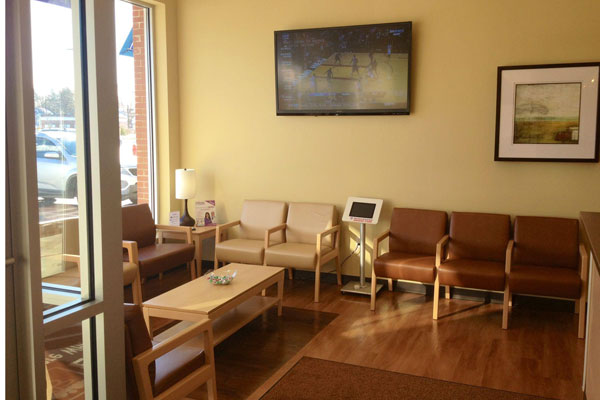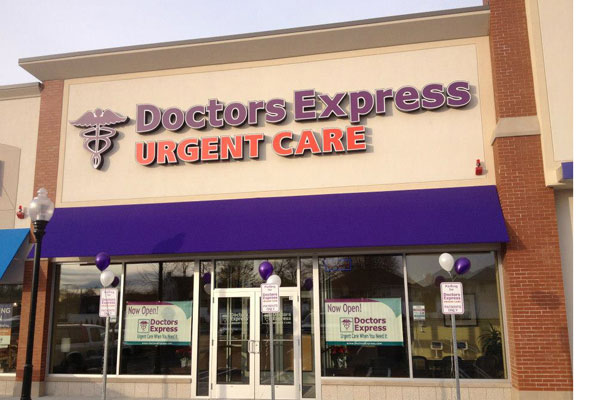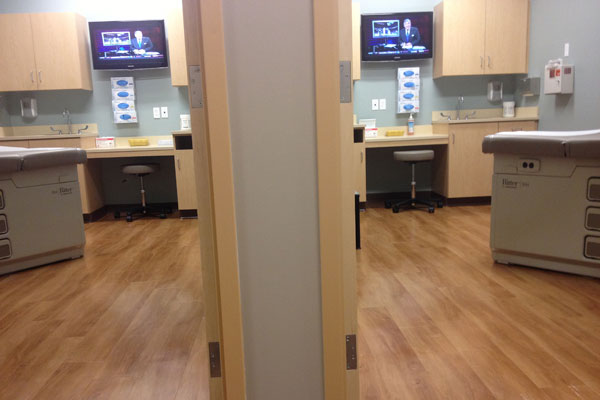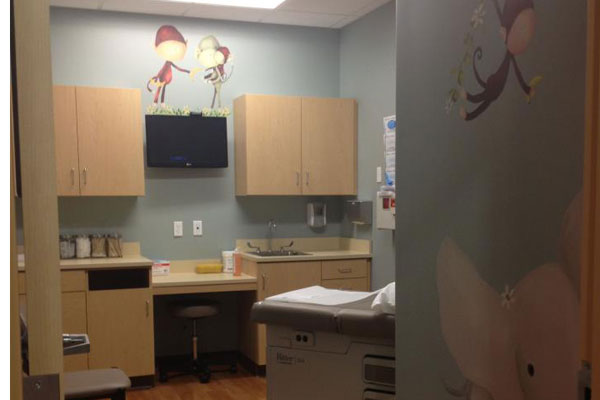The Rise of Urgent Care Facilities
 Doctors Express in Waltham has flat screens and iPads. Photo provided.
Doctors Express in Waltham has flat screens and iPads. Photo provided.
If you cut yourself cooking, or sprain an ankle running, your first instinct would likely be to head straight to the emergency room. But as the medical field changes, urgent care facilities—community-based centers that treat non-life-threatening injuries with no appointment necessary—are getting far more common, and fast.
Already an established industry in other parts of the country, walk-in care centers are rapidly growing in popularity in New England, and doing away with past stigmas. Doctors Express, a nationwide urgent care chain that only hires board-certified doctors recently added three new locations (Waltham, North Andover, and Saugus) in December 2012. The company is planning to open more locations (Cambridge, Dedham, Melrose, and Watertown) this year. Several other companies, like Health Express and Concentra, offer similar urgent care services in Massachusetts, and a joint Brigham and Women’s/Massachusetts General Hospital urgent care facility operates in Foxboro.
Gary Blair, medical director at Doctors Express Waltham, says he isn’t surprised that Massachusetts is embracing urgent care. “In other states they have urgent cares and people use them a lot,” he says. “Up until now, there really haven’t been that many in the Massachusetts area, so I think that this is just a continuation of what’s happening around the country.”
Blair attributes the surging popularity of urgent care facilities to the fact that they are simply more pleasant and efficient for patients than an emergency room. “We don’t have the overhead of a hospital; we can do it at a fraction of the cost,” he says. “We can do it quicker and more cost effectively. We can get in and out in an hour.” Blair says that the typical copay at Doctors Express is $25 or $35, compared to about $100 in an emergency room, and that the wait time is far shorter (and most likely more tranquil) than a loud, chaotic hospital.
Blair joined Doctors Express after working as an emergency physician in a traditional hospital environment for 20 years. He says that about 30 percent of emergency room patients don’t need to be there. “And what I mean by that,” he says, “is we can offer the care quicker, faster, and more efficiently in the community at an urgent care facility.”
Many urgent care facilities are fully-equipped to treat non-life-threatening ailments like sprains, strains, cuts, inflammation, and fractures, though emergencies like heart attacks and shortness of breath still belong at the emergency room. “Look at it as something that you would do in your doctor’s office and then some,” Blair explains. “Patients tell me again and again how much they love it,” he says. “It just fills a customer service niche that wasn’t there before.”
 The exterior of the Waltham Doctors Express location.
The exterior of the Waltham Doctors Express location.




